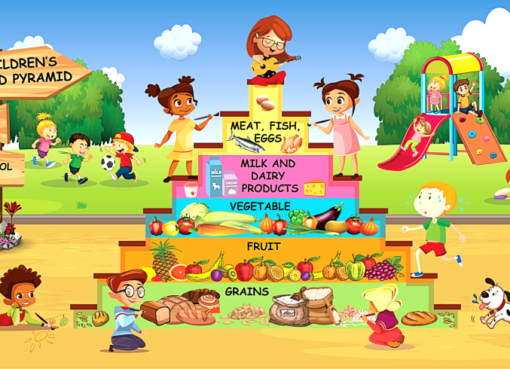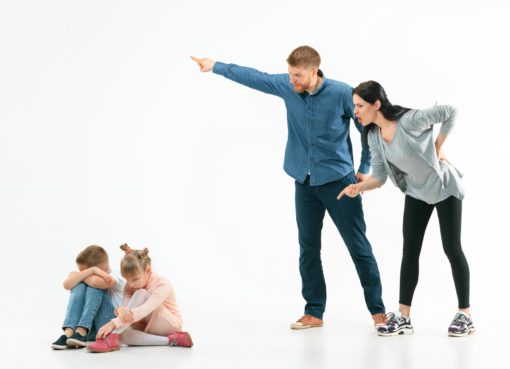Significant changes occur in the brain in the first three years of human life. Also, there is growing evidence that the teenage brain also experiences amazing changes. Actually, the changes which the teenage brain experiences are some of the most significant and intense changes in the entire human life.
Given the connections between the brain and behavior and the huge changes that occur in the teenage brain, we shouldn’t be surprised that children start to behave differently at teenage age. Understanding these changes in the teenage brain and their impacts on behavior will be much easier to help teenagers to overcome problems typical for them.
How the brain affects behavior?
At first, it is important to understand how the brain affects behavior. The theory of Paul MaClean, the American neuroscientist, will help us in this. His theory explains that the human brain has three brains. Each of them has a different function. Brain 1 (primitive brain) and brain 2 (limbic system) are ready for action from birth. Their job is to keep us alive and warn us of the danger. But, brain 3 (neocortex) begins to form from birth. Babies have billions of genetic pre-programmed neurons that can establish thousands of connections and pathways. This process, however, is under influence of external experiences exclusively.
For a better understanding of how these three brains work, I will use speech holding as an example. If speech holding in front of an audience is an unpleasant experience for you, your brain 2 will send a message to activate stress. You will feel the jitters and you will start to excrete stress hormones. Then, brain 3 will translates this message into a conscious thought that you don’t like to hold a speech in front of the audience because you are scared of it. All these influences will determine your behavior.
The impacts of changes in brain 3 on teens
The neocortex, brain 3, is the external layer of the brain. It is in charge of thought, but also the understanding of everything that we see, hear, smell, and touch. In fact, considering the teenage brain, it is most important to mention the prefrontal cortex. The prefrontal cortex is the front region just behind the forehead and it is the seat of the mind. This part of the brain is responsible for learning rules, understanding consequences, solving problems, and understanding emotions. The biggest changes are happening just in this part of the teenage brain.
Namely, in the teenage neocortex, there is a sudden growth of new nerve pathways as well as a re-examination of the elderly. This cause complete chaos in this part of the teenage brain, namely, complete chaos in their mind. However, brain 2 takes a major impact on teens during the repair of the neocortex. Because of that, teens become more sensitive.

How do changes in brain 2 influence teens?
Brain 2 deals with hunger, thirst, sexuality, and emotions. This part of the brain also includes the amygdala which is responsible for most teenage problems. Amygdala is the seat of instincts and emotions. Also, it plays a significant role in our reaction to stress.
When we react to an event, our central nervous system transfers messages through a neural network of our body. The main road to which these messages travel links the brain and spinal cord. The amygdala is the place of activation of our reaction to these messages. It scans the world in search of threatening experiences in order to activate us to the potential danger.

The amygdala is extremely sensitive in teens. In addition, it and other emotional centers have a greater impact on teenage behavior than the neocortex which is responsible for thinking. Therefore, teens consider stressful experiences and those that adults consider as irrelevant.
Also, the amygdala, along with the neocortex, plays a key role in recognizing other people’s emotions. It allows us to interpret the facial expressions of other people so that we can feel whether they are happy, sad, or angry.
When pictures of people with scared facial expressions were shown to adults and teenagers, the teenagers showed more activity in the amygdala and much less activity in the neocortex than adults. That explains why they are much more inclined to conclude which emotion they observe incorrectly than adults. Because of that and their very sensitive amygdala, they often react very unreasonably. So, we should not be surprised when only the raised eyebrows cause the eruption of negative emotions in a teen.
The impacts of the brain reward system on teens
All parents know that their teenagers are prone to nonsense in the company of their peers. Now, I will explain to you why. Namely, the teenage brain reward system develops faster than the prefrontal cortex. That’s why teens look for short-term excitement but ignore important long-term benefits. Also, their brain reward system reacts more when they are with peers. Therefore, in the teenage years, the excitement of madness with friends has greater power than a healthy mind.

The impacts of myelin and corpus callosum on teens
Myelin is a white substance that covers the nerve cells. It has the same function as plastic insulation on cables. It increases the transmission efficiency of the nerve impulses in our brain. Namely, the nerve impulses travel through the nerve cells in almost the same way as the current flows through an electric cable. In teens, myelin is still developing, and this development doesn’t end fully until they reach their twenties.
Myelin composes the corpus callosum, a bundle of fibers between the left and right brain hemispheres. So, while adults have a fast connection between the brain hemispheres, this connection is still uncertain and slow in teenagers. To explain, when adults click on a mental website, it will load at the same time. However, teens have to wait a little longer for their website to load before they can make a decision.
The teenage brain is very flexible and the impacts of the environment can shape it.
The brain 3 of newborns is like a sponge. It adjusts to the environment. As soon as babies begin to reach experiences, their brain starts to establish a network of neural pathways in a unique way. As result, each person has his/her own recognizable behavior.
This adaptability is again pronounced especially in the teenage age. The teenage brain examines the effectiveness of existing pathways to determine which will keep them as patterns of behavior. Then, parents again have an important role in establishing patterns of behavior by their reacting to teenagers’ behavior.
So, since the teenage age is the period when patterns of behavior are being established, we must have in mind that teenagers will adopt the behavior style which is most often allowed to them. For example, when we give it up to an angry teen, we encourage him/her to react with anger the next time.
is described very clearly in the book Teenager Translated. There, the teenage brain is compared to a garden in which there was a sudden overgrowth of plants and weeds. For the brain, it is a sign that it is necessary to throw it to work. In order for young plants to have a place for growth, It is necessary to clean, remove weeds, and prune,… With good cultivation and care, plants will grow strong and healthy.
Imagine now that these plants are actually behavior patterns and apply the rule for the well-caring garden. Weeds must be removed every day not allowing unwanted plants to leave the weeds.
Conclusion
To summarize, many unreasonable and confusing teenage actions are actually quite logical when we have in mind how their brain works. Also, the fact that the brain has a huge impact on teens doesn’t mean that the impacts of adults on them lose their importance. On the contrary, the teenage brain is very adjustable. Therefore, adults have a huge opportunity to help teens to become good and smart people. Show understanding to teens, be patient, motivate them to take positive action, and be a good model to them. In this way, you will help teens to overcome chaos in their brains by establishing peace and control over minds and emotions.

Literature
- Downshire J. Grew N. (2015). Teenagers Translated: How To Raise Happy Teens. Random House UK

